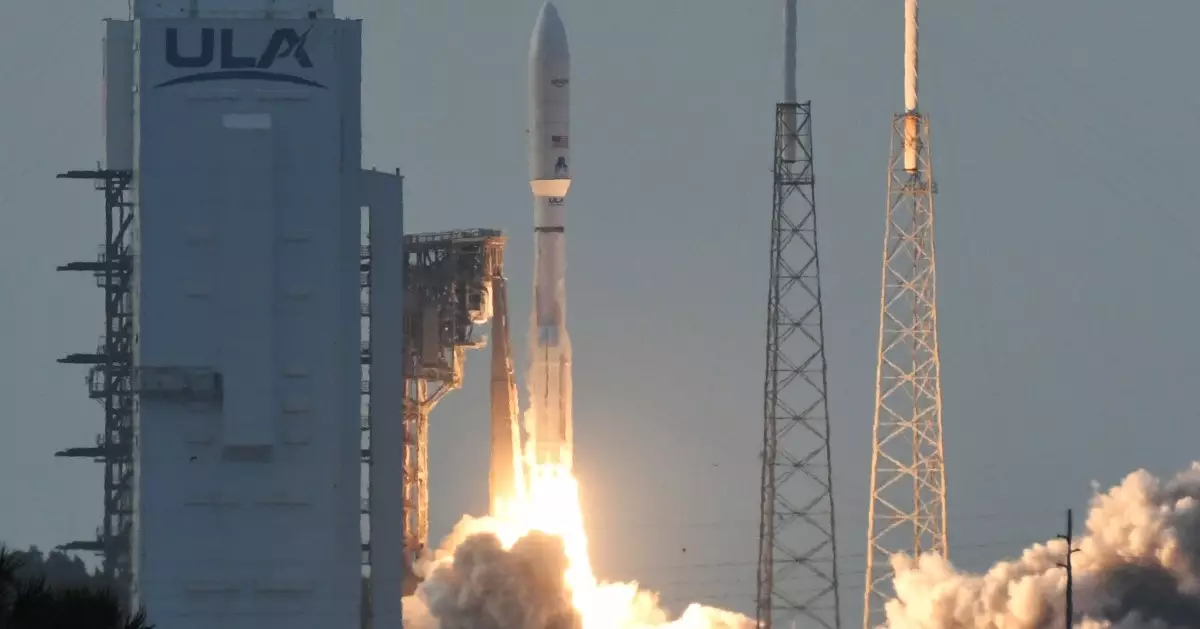In an audacious move to reshape the global internet landscape, Amazon’s Project Kuiper has initiated its first step with the deployment of 27 satellites into low-Earth orbit. This ambitious project is not merely a competition against established powerhouses like SpaceX’s Starlink; it’s an exhibition of innovation, determination, and the ever-expanding frontier of technology. These 27 satellites are only the beginning of a grand vision that includes more than 3,000 units designed to deliver high-speed, low-latency internet access to underserved regions.
The launch, executed with the aid of United Launch Alliance’s Atlas V rocket from Cape Canaveral, was the culmination of meticulous planning. It followed an earlier scrubbing due to adverse weather, illustrating the unpredictability and challenges inherent in space operations. That resilience is characteristic of Amazon’s approach, as CEO Andy Jassy noted the launch as a significant milestone on a “much longer journey,” suggesting both optimism and a recognition of the intricacies involved in satellite deployment.
Impact on Global Connectivity
The implications of Project Kuiper extend well beyond mere corporate rivalry; they touch on critical issues of digital equity and global connectivity. Many regions around the world remain on the fringes of internet access, disproportionately affected by inadequate infrastructure. With Project Kuiper’s promise of delivering “high-speed, low-latency” internet, the project is positioned to disrupt the status quo and foster digital inclusion.
As Kuiper prepares to start offering services within the year, stakeholders in the tech industry must acknowledge the potential for this project to bridge the digital divide. With a projected 1,618 satellites required to meet regulatory deadlines set by the U.S. Federal Communications Commission by mid-2026, the pressure is on Amazon to perform effectively and efficiently. This initiative is not merely about profit; it is fundamentally about empowering individuals through technology.
The Competitive Landscape
While Project Kuiper embarks on this ambitious endeavor, it is crucial to understand the competitive dynamics at play. SpaceX’s Starlink is already a formidable force, having launched over 7,200 satellites and with aspirations to expand to 34,400. The breadth of SpaceX’s existing infrastructure presents a significant barrier for newcomers, and it raises questions about whether this crowded orbital space can sustain competition without compromising the safety and operational integrity of the satellites involved.
Furthermore, companies globally are keenly observing Project Kuiper’s progress. The burgeoning space race is now populated by players like Eutelsat from France and China’s Spacesail, each vying for a share of the lucrative satellite internet market. Still, Amazon’s entry, backed by its considerable financial resources and technological prowess, gives it a unique competitive edge. The stakes are high, and the race to establish a robust satellite communication system will likely intensify as Kuiper ramps up its operations.
Challenges Ahead
However, it would be remiss to overlook the challenges that lie ahead for Project Kuiper. With a projected investment of $10 billion, the venture comes with immense financial risk, especially in a market where achieving profitability remains elusive. The operational complexities of satellite communication, governance, and the regulatory landscape present additional hurdles. Moreover, potential pitfalls such as orbital debris management and the sustainability of satellite operations in an increasingly congested low-Earth orbit must be addressed to prevent catastrophic outcomes.
Amazon’s commitment to altering the domestic and international landscape of internet accessibility through Project Kuiper is commendable. By deploying its first batch of satellites, Amazon is not just entering an established market; it is signaling a bold assertion that it can contribute to a future where ubiquitous internet access is a standard, not a privilege. The unfolding narrative will depend on an array of factors, including technological advancements, regulatory approvals, and, importantly, the effectiveness of its implementation strategies. The world will be watching closely as Project Kuiper embarks on its transformative journey into the cosmic realm.

